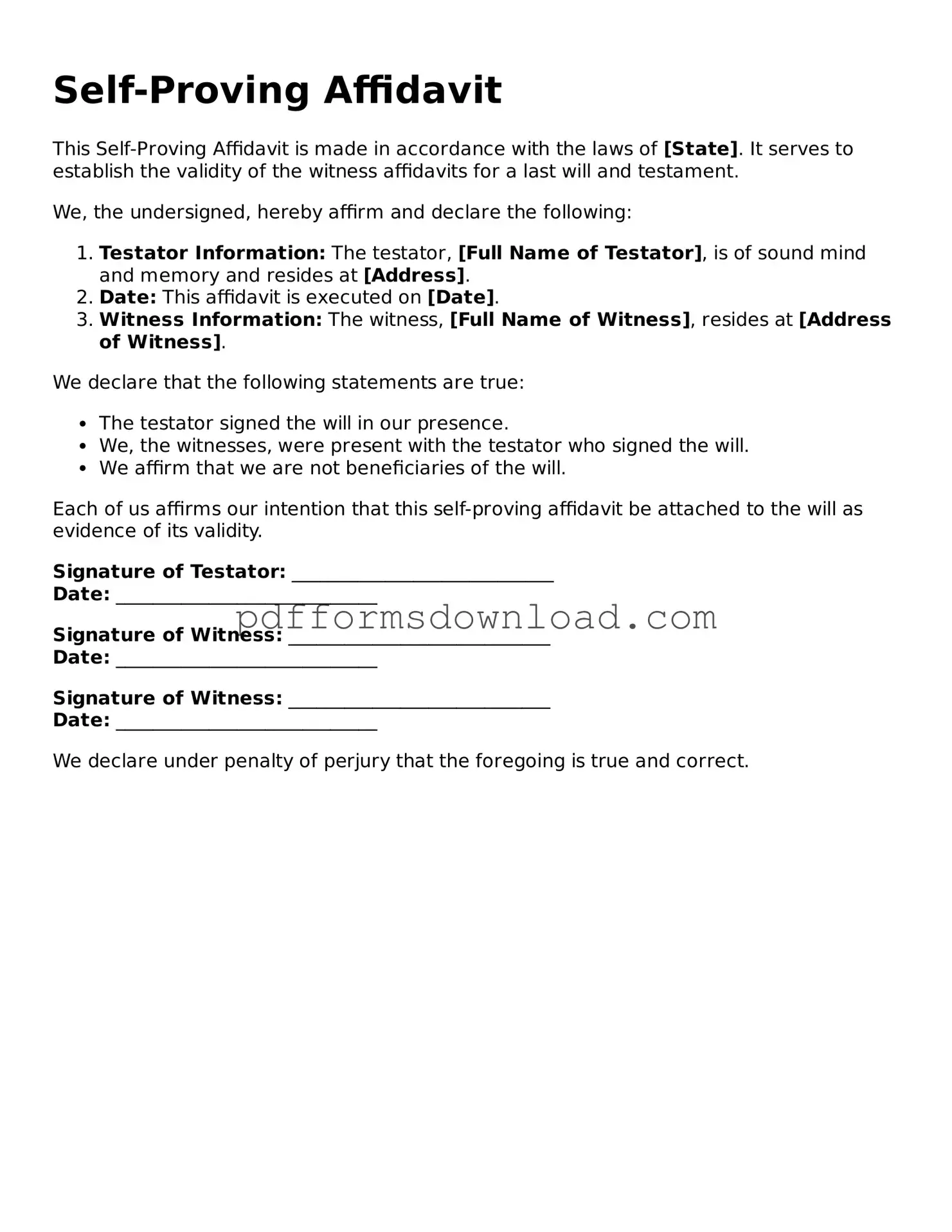What is a Self-Proving Affidavit?
A Self-Proving Affidavit is a legal document that allows a will to be validated without requiring the witnesses to testify in court. It is typically signed by the testator (the person who made the will) and the witnesses in front of a notary public. This affidavit serves to confirm that the will was executed properly, which can simplify the probate process.
Why should I use a Self-Proving Affidavit?
Using a Self-Proving Affidavit can save time and reduce complications during probate. If the affidavit is included with the will, it eliminates the need for witnesses to appear in court to prove the will's validity. This can ease the burden on your loved ones during a difficult time.
Who can sign a Self-Proving Affidavit?
The Self-Proving Affidavit must be signed by the testator and at least two witnesses. Additionally, a notary public must also sign the document. It's important that all parties are present at the same time to ensure the document is valid.
Is a Self-Proving Affidavit required?
No, a Self-Proving Affidavit is not legally required to create a valid will. However, including one can streamline the probate process and reduce potential disputes. If you want to make things easier for your heirs, it's a good idea to consider using one.
How do I create a Self-Proving Affidavit?
To create a Self-Proving Affidavit, you can typically find templates online or consult with an attorney for assistance. The affidavit should include details such as the testator's name, the names of the witnesses, and the notary's information. Ensure that it is signed in front of a notary public to make it legally binding.
Can I revoke a Self-Proving Affidavit?
Yes, you can revoke a Self-Proving Affidavit just like you can revoke a will. This can be done by creating a new will that explicitly states the previous one is revoked or by physically destroying the affidavit. It’s advisable to consult with a legal professional to ensure the revocation is done correctly.
What happens if I don’t have a Self-Proving Affidavit?
If you don’t have a Self-Proving Affidavit, your witnesses may need to testify in court to validate your will. This can lead to delays and additional costs during the probate process. Without the affidavit, there’s also a greater chance of disputes arising among heirs regarding the will’s authenticity.
Can I use a Self-Proving Affidavit in any state?
While many states recognize Self-Proving Affidavits, the requirements can vary. It's important to check your state's laws to ensure that the affidavit meets the necessary criteria. Consulting with a local attorney can provide clarity on what is acceptable in your jurisdiction.
